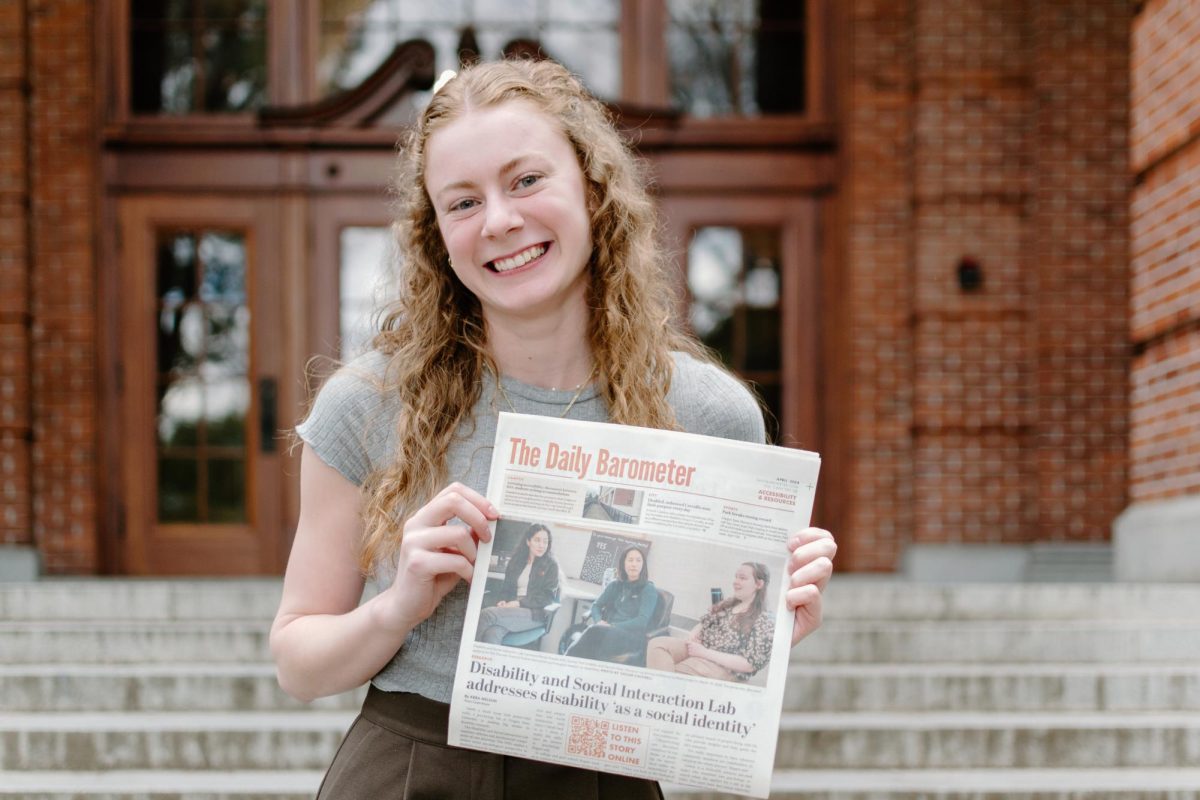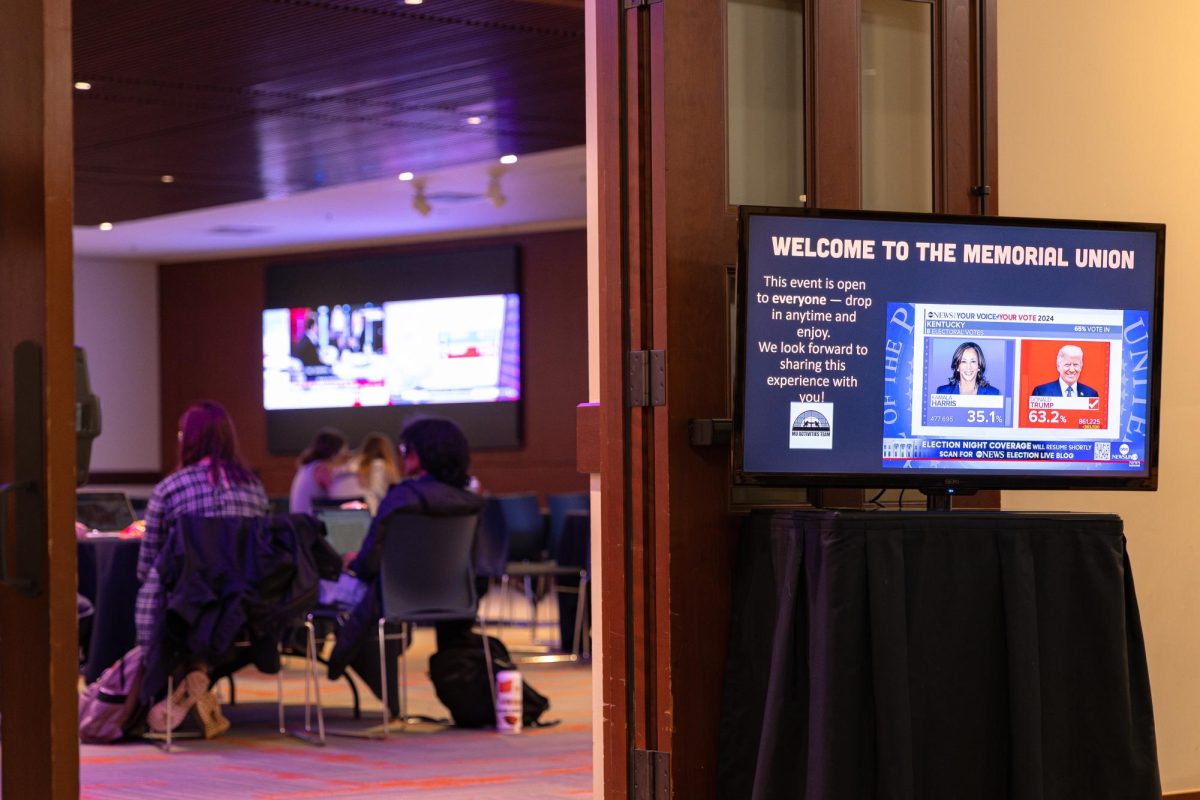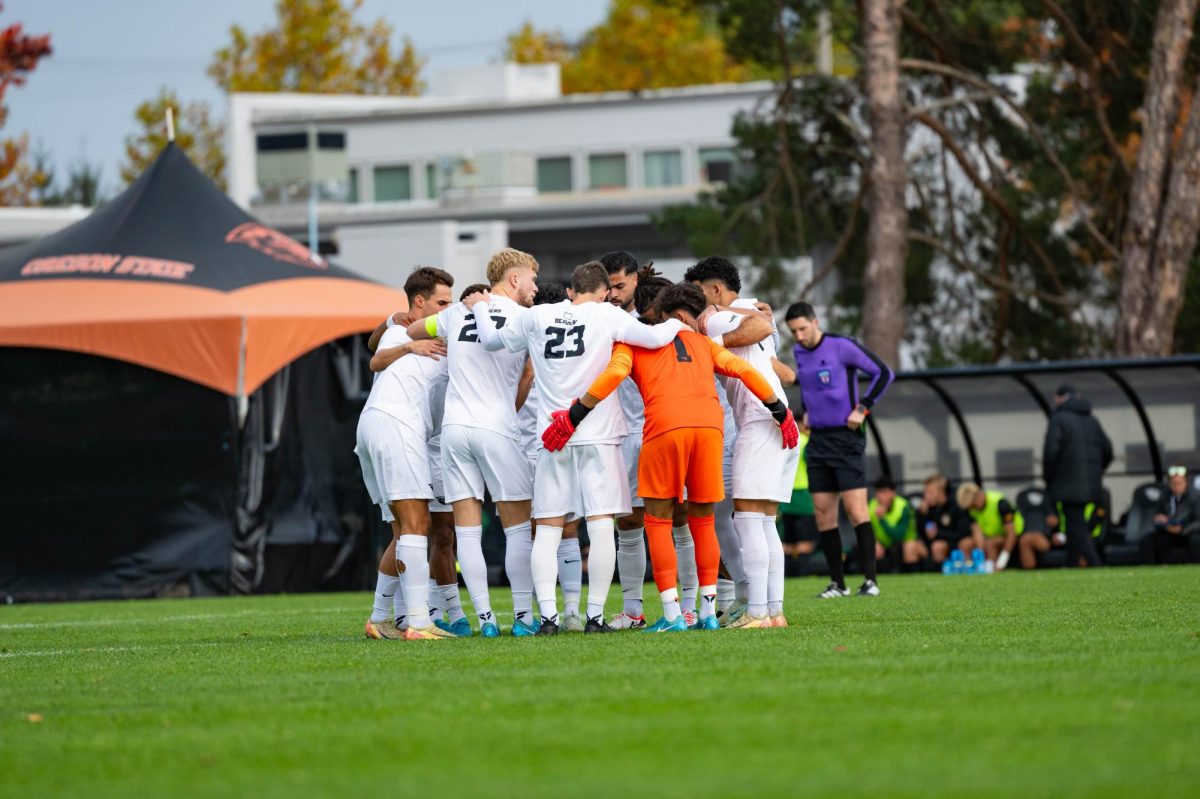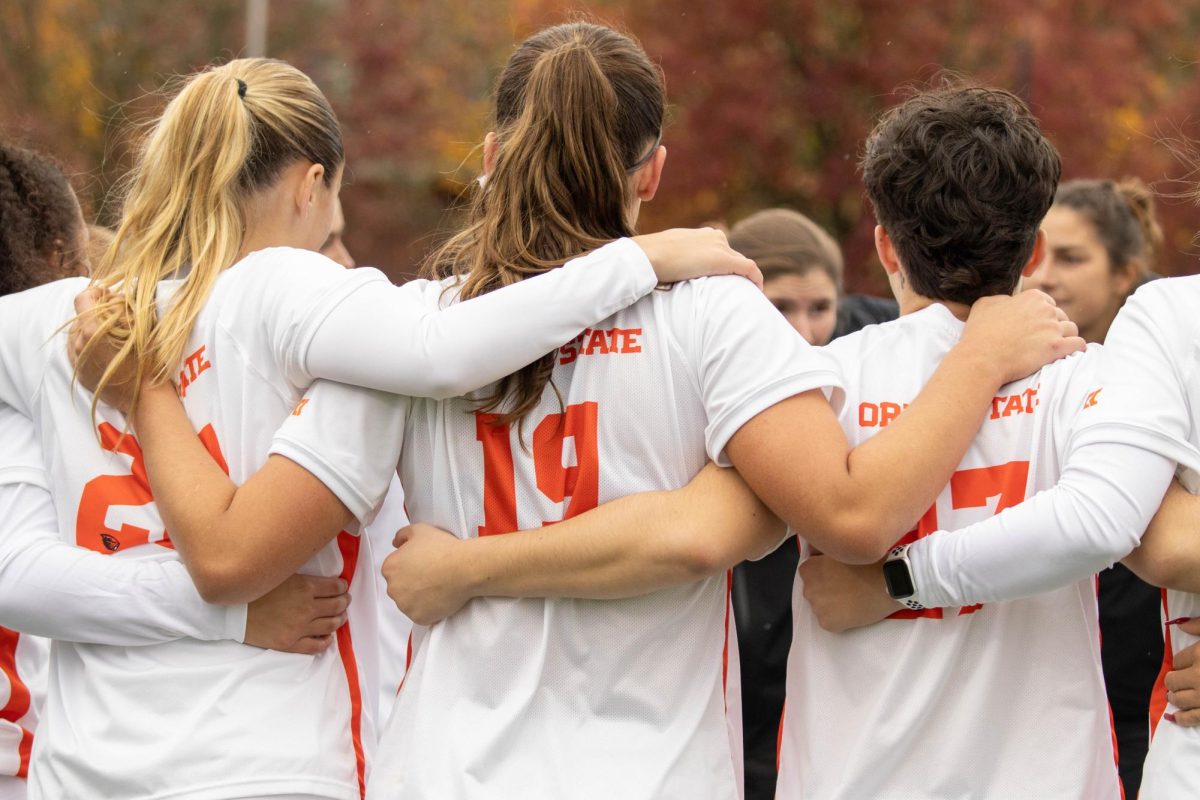Ariana Berenice is a second-year Ph.D. teaching assistant and studies women, gender and sexuality at Oregon State University.
As a Ph.D. student, Berenice teaches one class every term as part of her graduate assistantship which takes about 20 hours a week out of her schedule.
Her research revolves around Latina single mothers in the United States.
“I think particularly as single mothers we go through harder barriers to make ends meet,” Berenice said. “My research focuses on that, like the survival of single motherhood.”
As a Mexican and single mother herself, Berenice understands the unique challenges those women face everyday.
“We make miracles to make everything happen,” Berenice said.
For low-income students with children, time management can be the biggest barrier to systems designed to help them.
According to the Institute for Women’s Policy Research, nearly one quarter of college students in the U.S. are parents. Additionally, parents make up over one third of low-income first-generation college students.
Having a child in college, while not impossible, can create barriers including high childcare costs – costing up to $13,000 in Oregon annually, reported by Axios – and difficulty in balancing school, work and parenting.
Some families at Oregon State University use government assistance programs to supplement their income while maintaining their full-time status.
Programs like Supplemental Nutrition Assistance Program, Temporary Assistance for Needy Families, and Women, Infants and Children exist to lighten the financial burdens that many parents face.
While these programs can make huge differences for the people that receive their benefits, maintaining access to these programs can be tedious, according to Jezz Brown and Berenice.
Brown is a graduate student studying human family development sciences, a TA and parent of two.
In their past experience, reporting changes to SNAP is difficult due to inefficient online processing systems, which forced them to endure long holds during phone calls.
“Calling and dealing with them (is) just a headache, you know?” Brown said.
Berenice said that her SNAP benefits were terminated when she was no longer eligible for TANF. According to her, she was asked to prove unemployment despite being employed when she first started receiving SNAP and she had to talk to SNAP representatives on the phone every day for three weeks to get them reinstated.
Additionally, recipients of TANF must adhere to strict work restrictions. According to their website, parents must have little or no income to receive TANF, and they must have access to few resources.
According to Berenice, her TANF was cut after receiving benefits for six months during the pandemic. Representatives found that she was working three hours a week as a yoga instructor, something Berenice didn’t feel was important to report to them. She no longer receives TANF benefits nor is she eligible to get them in the future.
So what does OSU do to alleviate the challenges that low-income student parents may face?
Through the Family Resource Center, parents have access to weekly events called Student-Parent Connections. Parents are invited to eat free, catered meals every Thursday afternoon, which allows student parents to share resources, experiences and create community.
For Berenice, the program makes a big difference.
“We get to eat with other parents and get to share our experiences and even services,” Berenice said. “We feel loved and it’s very special.”
Through the FRC, parents also have access to clothing exchange programs, a gifting closet, lactation rooms, financial assistance programs and child care assistance.
As an advisory board member for the FRC, Brown makes suggestions on how the center can improve lives for families at OSU.
Furthermore, Brown and Berenice also make use of Our Little Village. The childcare and education center, offered through the FRC, provides short-term, drop-in and reservable care that is free to OSU students. They are found in the Milne Computer Center and the Dixon Recreation Center on campus.
Brown said they are able to use the time their children are in OLV to work on their research and complete work for their TA appointments.
One of Brown’s children also uses the Head Start program at OSU – another child development center – where they are also a chair on the policy council.
Anna Gortva, an undergraduate horticulture major and single mother, is grateful to OSU for the resources it provides for families.
“I picked OSU because it has more services than any other university I looked at,” Gortva said.
Gortva’s child attends Beaver Beginnings, another childcare center offered through the FRC but operated by KinderCare Learning Center. Through the childcare assistance program, she is able to cover much of the cost of her son’s childcare.
“By utilizing these resources means that I have more time to focus on my studies and more time to focus on my (child), which is my top priority,” Gortva said.
However, Gortva and Brown believe that OSU could go further in supporting student families. They both wish there were more opportunities for on-campus family housing.
Currently, the only on-campus housing complex is the Orchard Court Apartments, which only accommodates 107 families at a time.
While attending OSU, Berenice initially commuted from Hillsboro, OR, which cost her about $800 in gas every month and four hours of commute time driving back and forth.
Berenice eventually moved to an apartment in Corvallis, but the rent cost her $2,000 each month – more than what her graduate assistantship pays.
After moving to Corvallis, Berenice remained on the waitlist for Orchard Court for another year. Her entire wait time totaled around two years.
Berenice described the waiting process as “pretty painful.”
However, moving into the Orchard Court Apartments made a huge difference for Berenice, cutting her rent in half from $2,000 to $1,000 each month.
Both Gortva and Brown have been on the waitlist for Orchard Court for over a year and a half. They have both also experienced difficulties with renewing their waitlist applications, which must happen once annually.
Although Gortva has yet to be accepted for the apartments, Brown was recently accepted but opted for a low-income housing unit in Corvallis which they were accepted for as well.
We reached out to Orchard Court Apartments to ask if there were plans to build new family housing units on campus, but they did not respond in time for this article.












































































































